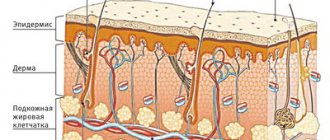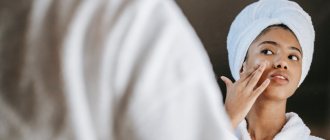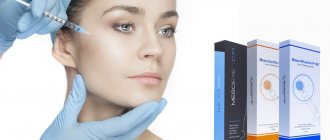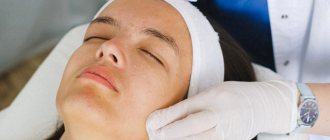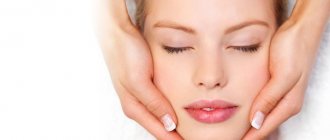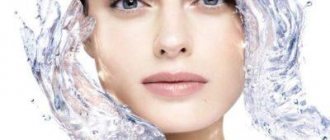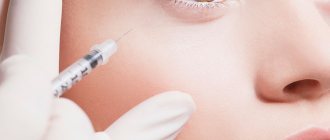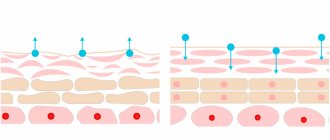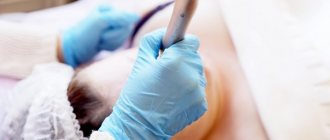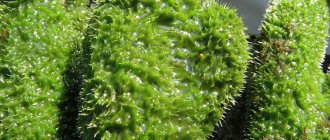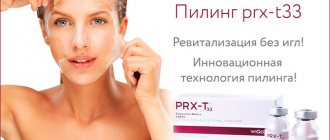The concentration of the active substance does not dissipate, but fights pathogenic microorganisms in full. Thanks to this, the positive impact appears quickly enough and is sustainable. Bacteria die, cellular metabolic processes are restored, and the skin recovers.
Contraindications
In some cases, mesotherapy is not allowed. These are cases when it is either worth postponing the course of treatment for a certain time, or replacing it with an alternative method.
- Pregnancy and breastfeeding.
- Herpetic eruptions on the skin.
- Poor skin coagulation.
- Oncological diseases.
- Diabetes.
- Hyperthermia.
- Hypertonic disease.
- Kidney and liver diseases.
- Allergy to components of medicinal drugs.
- Cardiovascular diseases.
- Menstruation.
- Epilepsy.
- Age up to 18 years.
- Infectious diseases.
- Hypersensitive skin.
- Hormonal problems.
- Mental illnesses.
A limitation to mesotherapy will also be the extensive affected area. In this case, you should choose another treatment method.
Composition of the injection and principle of action
Typically, a multicomponent composition is used for mesotherapy purposes. It's called a meso cocktail. It can contain various substances, each of which performs its main function:
- antibiotics, penetrating into the affected area, destroy pathogenic microorganisms;
- glycolic acid thins subcutaneous sebum, activates collagen production and starts recovery processes;
- placentex helps increase the body's immune forces and takes part in cell renewal;
- a multivitamin complex restores cellular metabolic processes, which improves the structure of the epidermis;
- Vitamin C strengthens the walls of blood vessels and helps cells resist infections.
Mesotherapy cocktails may also include trace elements of potassium and magnesium, homeopathic medicines, hyaluronic acid, and natural plant extracts.
The composition of the anti-acne meso-cocktail complex is formed individually and depends on the size of the affected area, the nature of the rash, its location, the duration of the disease, the age of the patient and other factors at the discretion of the cosmetologist.
Etiology and pathogenesis
It has been established that in 99% of cases, post-acne scars develop in the place of papules or pustules, and only in 1% of cases - in the place of comedones. The healing of such defects is due to a complex interaction of tissue, humoral and cellular mechanisms. If the skin is damaged at the level of the papillary (upper) layer of the dermis, when fragments of the basement membrane between the epidermis and dermis are preserved, restoration can take place without gross defects. In such places, depigmented areas with focal atrophy remain on the skin.
However, when the basement membrane is completely destroyed, a scar is formed, which differs in structure and function from the surrounding skin. In its area, coarse fibrous collagen grows, blood and lymphatic vessels are deformed, and their number sharply decreases. At first the scar is immature , but gradually it becomes more natural in color and softer, forming a mature scar .
If catabolic processes (synthesis) exceed anabolic processes (destruction), excess collagen is formed - the scar begins to grow and becomes hypertrophic . It is distinguished by a pink tint and bulge above the skin level. With keloid, the scar area increases significantly due to the tumor-like proliferation of immature connective tissue due to the uncontrolled activity of fibroblasts. Features of keloid scars are their rapid growth with paresthesia (tingling), itching and pain.
The likelihood of the appearance and severity of scars after acne is influenced by the individual tendency to scar tissue, the time of onset and effectiveness of acne treatment, the activity of acne (mild, moderate, severe), the number of papules, pustules and comedones and other factors.
Stages of the procedure
- Preliminary medical consultation. At the first stage, an appointment is made with a cosmetologist. The doctor performs a full examination of the affected areas of the skin. Assesses the severity of the lesion, studies areas of spread. Finds out circumstances that may become a contraindication to treatment. If necessary, sends for blood donation for testing. May send a sample to check for a possible allergic reaction. Determines the composition of the cocktail sufficient to solve the problem. Prescribes the number of sessions, their duration and the start time of the therapeutic course.
- Preparing for the procedure. First, problem skin is thoroughly cleansed of cosmetics and other contaminants. Then the desired areas are treated with an antiseptic. Next, if necessary or if the patient wishes, a special anesthetic cream is applied. This helps reduce pain for people with particularly sensitive skin.
- Injection. Using a syringe, the drug is injected in small portions into the middle layers of the skin. Depending on the nature of the lesion, the doctor can prick each element separately or the entire area of the rash. At the end of the procedure, the skin is disinfected again and compounds are applied that relieve inflammation from exposure and help speed healing.
In addition to injection treatment, there is non-injection mesotherapy, the essence of which is to deliver the drug not through an injection, but using laser radiation or using oxygen.
What scars can be removed
There are several types of scars that can appear on the body. Normal scars respond well to mesotherapy treatment. These include the following defects:
- normotrophic (level with the skin, without atrophy of the underlying tissues);
- atrophic (below the skin level, with tissue atrophy; these include stretch marks and stretch marks).
There are also pathological scars. These include:
- hypertrophic (rising above the skin);
- keloids (growths of scar tissue).
Normal scars are a physiological defense response of the body to maintain homeostasis. Their appearance is not any deviation. Whereas hypertrophic and keloid scars are the result of a pathological reaction. Unfortunately, the treatment of the latter type of defects is quite complex and today there is not a single 100% effective technique.
A course of treatment
Treatment of acne using mesotherapy is cumulative (one procedure will not be enough). The number of sessions required to achieve the result is determined by the cosmetologist, taking into account the patient’s age, the size of the affected area, the nature of the lesions, the degree of the lesions, and the type of acne. Typically, for the treatment of acne, 5 to 10 sessions are prescribed with a break of 2 to 4 weeks between each of them.
If the disease is advanced, more intensive therapy will be required, up to 15 sessions at shorter intervals. Often, in combination with mesotherapy, additional cosmetic procedures are required. For example, laser resurfacing will help quickly rid the skin of post-acne defects, even out the skin texture and restore a uniform skin color.
Mesotherapy techniques
The mesotherapy procedure has several variations used in individual cases.
- "Classical". It is used most often, but not for extensive damage.
- "Papule". The point is to inject injections into areas of potential acne, acting proactively.
- "Nappage". It consists of introducing superficial injections in large quantities. The lack of technology is the irrational use of drugs, up to 60% of which are lost.
Based on the depth of impact, they are distinguished:
- deep, which is carried out using hardware;
- median, with the release of blood drops;
- superficial, most painless and without blood.
Side effects
Although rare, side effects of mesotherapy can still occur:
- swelling of the skin;
- the appearance of itching;
- formation of compactions;
- skin redness;
- the appearance of hematomas;
- new rashes.
Usually, side symptoms do not bother the patient and go away without additional treatment. However, if after the recovery period they do not disappear, cause discomfort or cause pain, you should consult a doctor.
Therapeutic results
- Acne, post-acne, blackheads and other skin inflammations disappear.
- The skin is moisturized and the texture is evened out.
- There is an abundance of vitamins and microelements.
- The skin acquires immunity, which protects against re-entry of pathogenic microorganisms and bacteria.
To consolidate the results obtained for a long time, you will need to establish proper regular facial skin care. You should learn to take a responsible approach to the selection of high-quality decorative cosmetics and skin care products. It is important to get rid of bad habits and adopt a healthy lifestyle.
Benefits of mesotherapy in the treatment of acne
Treating acne with mesotherapy is beneficial for a number of the following reasons:
- obtaining quick results, noticeable after the first session;
- absence of harmful effects on other organs and systems of the body;
- complete restoration of the skin, a noticeable improvement in its condition in cases of treatment of the deepest scars;
- low probability of allergies to meso-compositions;
- maintaining the result for a long time;
- convenience of outpatient treatment without the need for hospitalization.
What is acne?
So, acne, or acne, is one of the most common skin diseases. Many people are seriously mistaken in believing that acne is only a temporary problem for teenagers and goes away on its own.
Acne can be advanced, and then acne treatment will have to be combined with anti-aging actions. Let's look at the question from the inside to understand how to achieve the ideal result: clean, smooth skin, even natural tone. Curing problem skin means subsequently enjoying your appearance and being confident.
Acne - accompanied by blockage of the ducts of the sebaceous glands, which leads to inflammation. Acne and pimples are a direct consequence of the disease. Their appearance is mainly characteristic of those areas where the largest number of sebaceous glands are located. These are the so-called seborrheic zones, which are concentrated on the face, back and chest. It is important to know that acne is not just any rash, as everyone is used to thinking. The term refers only to purulent inflammations. Another form of acne is blackheads (comedones). They are non-inflammatory formations that also require equal attention. It is necessary to distinguish between open comedones (black dots) and closed ones (they look like small white nodules).
According to research, acne most often appears in teenagers. The reason for this is puberty. It is then that the sebaceous glands work with particular intensity.
Features of rehabilitation
The rehabilitation period after each session can take from 1 to 10 days. The first to disappear are the seals caused by the injections. Other complications gradually disappear. There should be no rashes on the skin by the end of the treatment course.
During the recovery period, you should adhere to the following simple rules:
- on the day of the session, do not use decorative cosmetics and new, previously untested skin care products to avoid the occurrence of an extremely undesirable allergic reaction during the treatment period;
- after the procedure, avoid contact with water for 7 hours, do not wash your face, and after the time has elapsed on the first day, use exclusively distilled water for washing and without the use of cleansers;
- avoid procedures that cause pores to expand, refuse to visit baths, saunas, or engage in active sports;
- during the full course of treatment, it is forbidden to drink alcohol-containing drinks due to their vasodilating effects, which will lead to the rapid removal of medicinal drugs from the cells;
- avoid visiting beaches and sunbathing, use a cream that protects against ultraviolet radiation to prevent the appearance of age spots on the skin;
- due to the negative effect of nicotine on regeneration processes, you should stop smoking during treatment and recovery;
- any cosmetic manipulations at home after the mesotherapy procedure should be discussed with your doctor;
- foundations are allowed to be used no earlier than 24 hours after the session;
- Skin peeling is allowed no earlier than 2 weeks after the procedure.
What causes acne?
Normally, the horny scales of the skin are periodically renewed. First they die, then peel off. Failure of this process directly leads to the formation of acne. If they stop exfoliating in any area, a build-up of skin flakes occurs, which prevent sebum from flowing freely. That is, it is all due to blockage of the sebaceous glands, which is a kind of traffic jam. And it manifests itself precisely in the form of acne or pimples.
Blockage of the sebaceous glands in itself is already a big problem. But here the situation is significantly complicated by the fact that the sebaceous glands begin to work with even greater intensity. During this process, excess secretion is released, in which the bactericidal functions are reduced and the amount of unsaturated fatty acids in the composition is reduced. Both of these processes are not random. People with a hereditary, genetic predisposition are naturally susceptible to them. Children of parents who suffer from acne should be given special attention to prevent the disease and its treatment.
Malfunction (decrease or increase) of the sebaceous glands is directly related to the hormonal stability of the balance in the human body. The state of the autonomic nervous system also plays an important role in this process. The second reason after hereditary predisposition is diseases of the endocrine and reproductive systems. One example of acne in women and the cause of its occurrence is the increased production of male hormones. In addition, they significantly complicate effective treatment.
All of the above factors fall into the category of internal foci. Some external factors also cause complications of this disease. These include the use of certain cosmetics. Here is a list of substances that tend to clog the ducts of the sebaceous glands: petroleum jelly, lanolin, paraffin and some vegetable oils (sesame, olive, peanut, coconut), sodium octanol sulfate, coloring pigments, stearic acid, isopropyl meristate, polyethylene glycol. Their use can significantly worsen the condition of the skin.
Steroid hormones, which are included in some medicinal creams, also do not have a positive effect on the course of acne. External factors that increase inflammation include exclusively mechanical pressure on the skin. This is, for example, friction from tight clothing. One of the reasons includes excessive sweating. People living in areas of high humidity should take special care of their skin.
